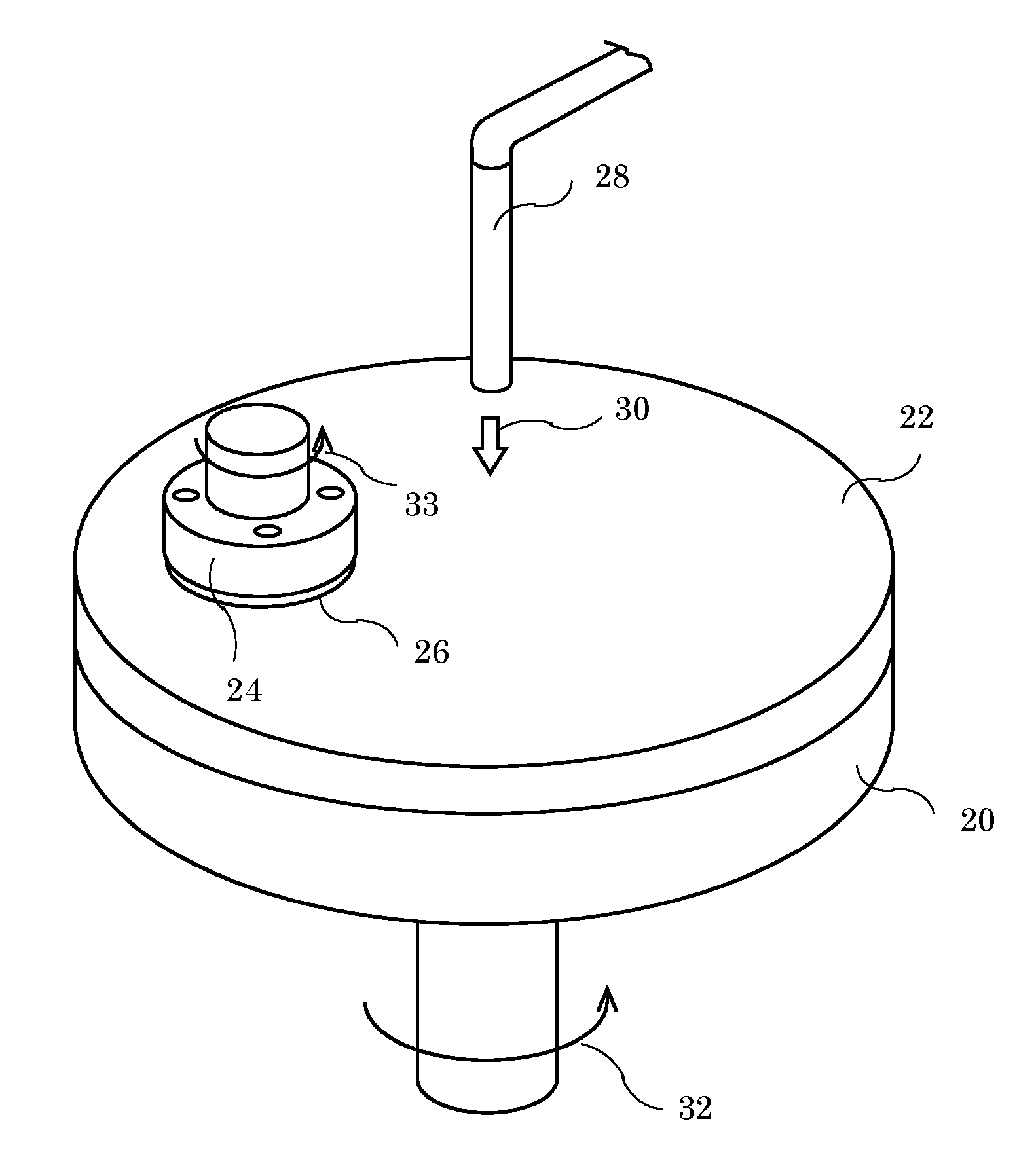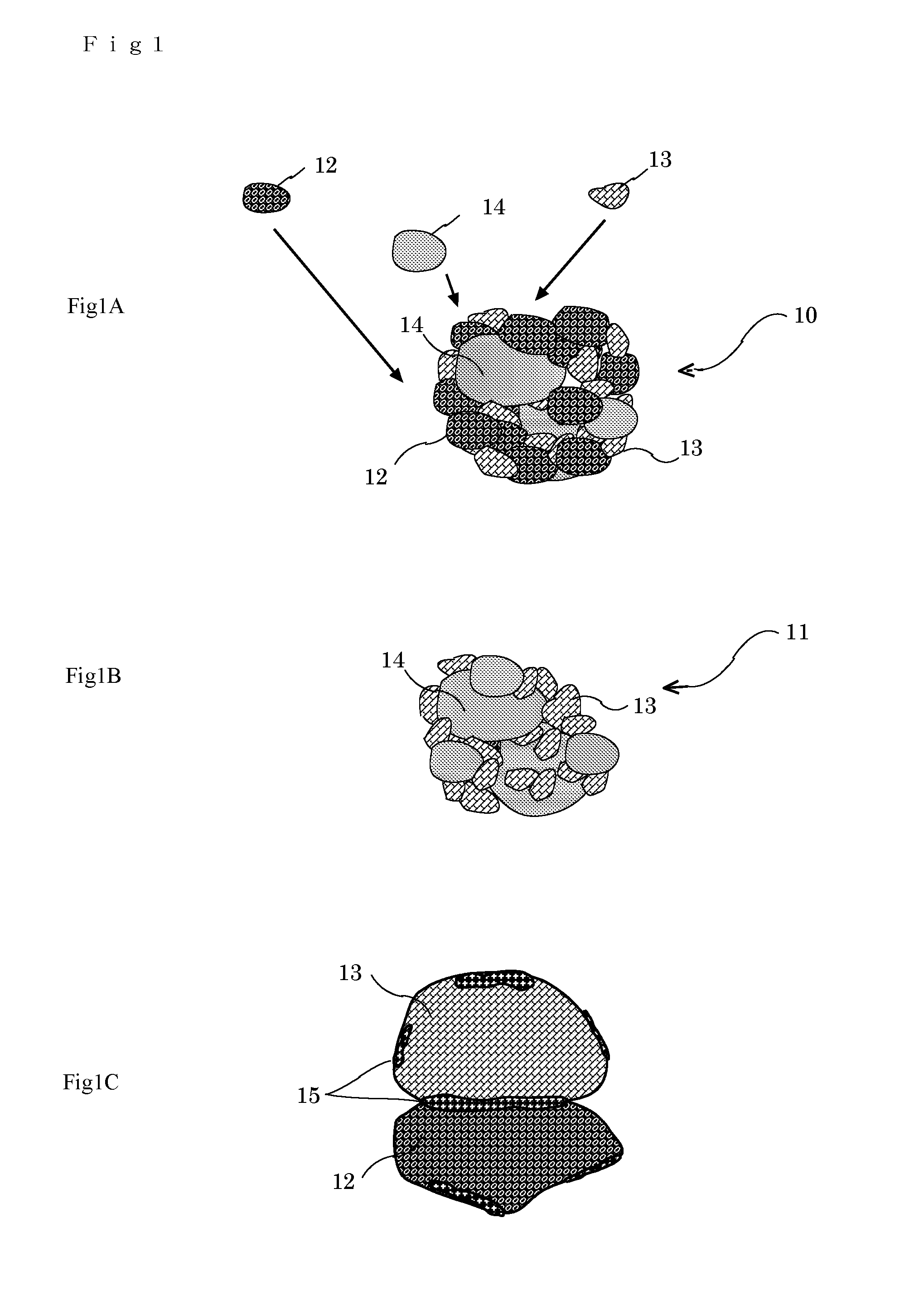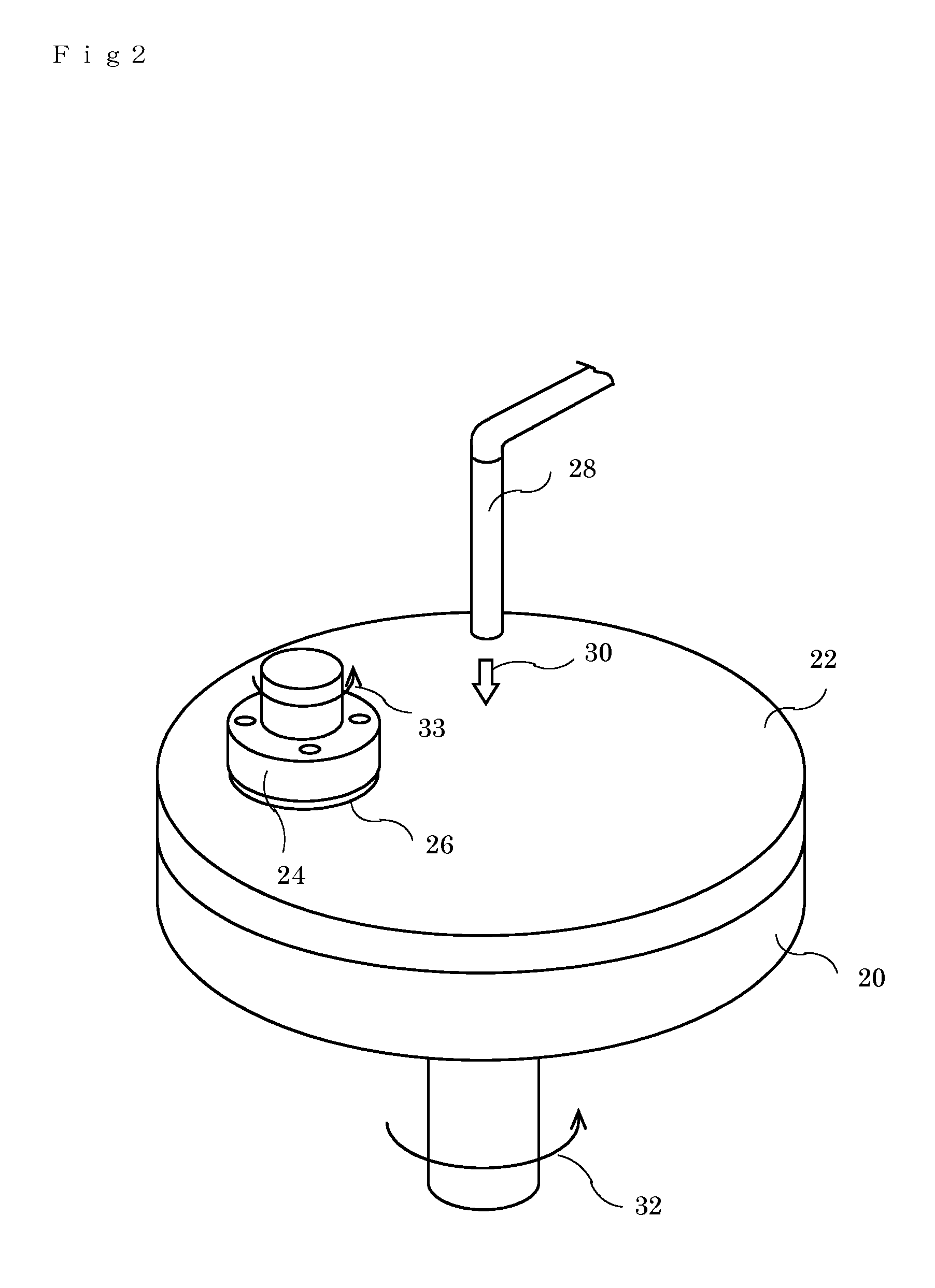Polishing abrasive particle, production method therefore, polishing method, polishing device, and slurry
a technology of polishing abrasives and polishing waste, which is applied in the field of polishing abrasives, can solve the problems of deteriorating a working environment, reducing productivity, and exposing abrasive particles and waste generated by polishing to high frictional heat, so as to accelerate the chemical abrasive action, improve the polishing rate, and improve the effect of polishing ra
- Summary
- Abstract
- Description
- Claims
- Application Information
AI Technical Summary
Benefits of technology
Problems solved by technology
Method used
Image
Examples
first embodiment
[0119]FIG. 4A and FIG. 4B are micrographs of the abrasive particle of the present invention, and FIGS. 4C-4F are explanatory figures of polishing action by the abrasive particle of the present invention.
[0120]FIG. 4A is a micrograph which illustrates the abrasive particles of a first embodiment immediately after integrated. As shown in FIG. 4A, various sizes of abrasive particles exist. The average particle size is 5 to 6 μm. The particles having the size of about 1 μm are also included. FIG. 4B is a partial enlarged view of the abrasive particle having outer diameter of about 6 μm in FIG. 4A. Three kinds of components, where each of them is grinded in advance, are mixed and strongly integrated with each other. The components are integrated, while maintaining the inherent chemical and the physical properties respectively. In the abrasive particle of the present embodiment, the components are integrated not so as to be separated from each other even after the polishing process. Even ...
embodiment 2
[0139]FIG. 7 shows a comparison of the polishing rate when various materials are employed as the first component for polishing SiC.
[0140]Sample 1-1 shows, for example, the result when silicon carbide is polished with the abrasive particle in which Al3O3, MnO2 and CaCO3 are integrated.
[0141]In this embodiment, the operation condition of the polishing device is set as follows; revolution speed of the surface plate 20 is 5 rpm, revolution speed of holding device 24 is 100 rpm; polishing pressure at which the holding device 24 presses the object material 26 against the surface plate 20 is 160 g / cm2. The slurry produced by scattering of the abrasive particle 15% by weight into pure water is provided on the abrasive pad 22 from the liquid pourer 28 at the rate of 10 ml / min.
[0142]Sample 2-1 shows the result when silicon carbide is polished with the abrasive particle in which ZrO2, MnO2 and CaCO3 are integrated. In each sample, various materials are employed as the first component 12 respec...
PUM
| Property | Measurement | Unit |
|---|---|---|
| size | aaaaa | aaaaa |
| size | aaaaa | aaaaa |
| temperature | aaaaa | aaaaa |
Abstract
Description
Claims
Application Information
 Login to View More
Login to View More - R&D
- Intellectual Property
- Life Sciences
- Materials
- Tech Scout
- Unparalleled Data Quality
- Higher Quality Content
- 60% Fewer Hallucinations
Browse by: Latest US Patents, China's latest patents, Technical Efficacy Thesaurus, Application Domain, Technology Topic, Popular Technical Reports.
© 2025 PatSnap. All rights reserved.Legal|Privacy policy|Modern Slavery Act Transparency Statement|Sitemap|About US| Contact US: help@patsnap.com



